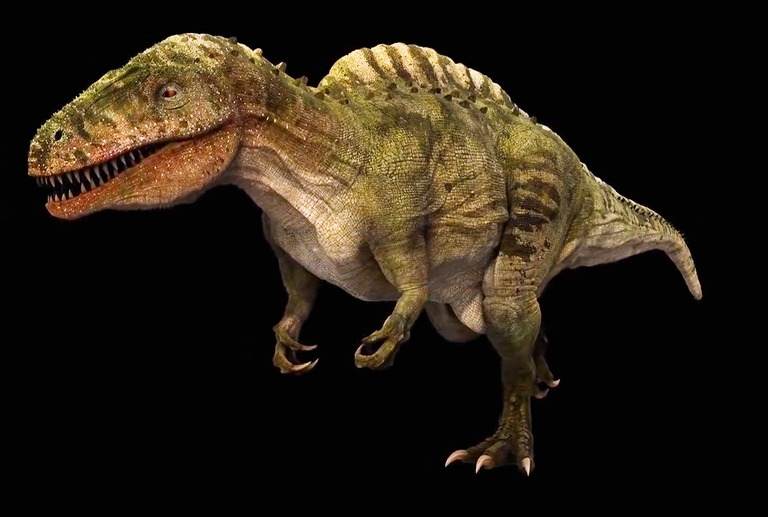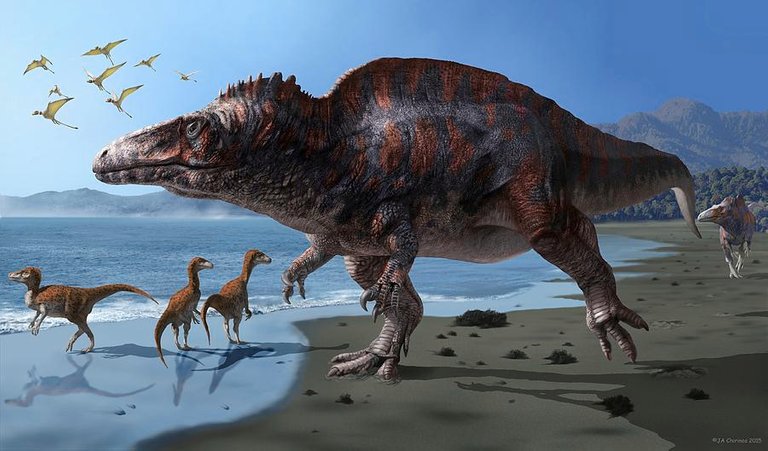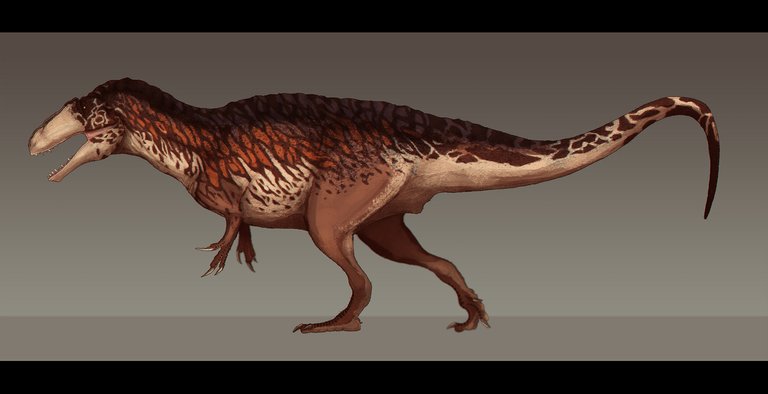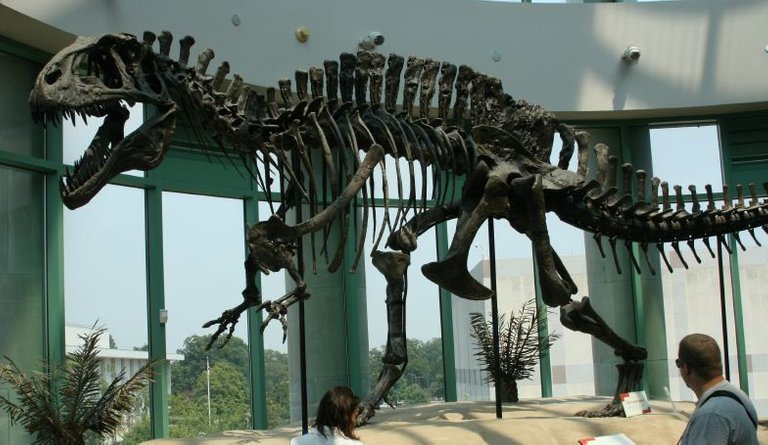Acrocanthosaurus:
Its name comes from the Greek and means "Lizard of high or large thorns" is a reropodoalosauroid dinosaur. He lived in the Cretaceous approximately between 125 and 99.6 million years ago, during the Albian in North America.
It was a bipedal predator, and as the name suggests, it is known mainly for its spinous processes, located in many of its vertebrae, and that seem to have held a "hump" on the neck, back and hips of the animal, was one of the larger theropods, about 11.5 meters long, and weighing up to 5.7 tons.
The Acrocanthosaurus was a great predator especially because of its large size. His skull was long and narrow and had a hole near his eyes that allowed his head was not so heavy and could hold and walk quickly despite its large size. His tail was very long and thick which made it powerful, as well as in other similar dinosaurs served to give balance to his body, so his center of gravity was in the middle and could move easily.
His arms were short and had three toes with claws. His legs on the other hand were peculiar since his femur, that is to say the bone of the thigh or of the upper part of the leg, was considerably longer, this took away a little balance for what the experts have concluded that the Acrocanthosaurus does not It was a dinosaur runner. In addition to all this his feet were very strong and powerful, he had four fingers of which only 3 touched the ground.
The Acrochanthosaurus presents characteristics of the superfamily to which it belongs, Allosauroidea, being the most typical and peculiar features of it the following:
- The presence of two crests that are inserted into the bone tissue coming from the nasal cavities.
- The presence of lacrimal glands located in the snout, with a secretory function, of another part, inherent to any glandular tissue.
- The presence of neural spines mainly located in the vertebrae of the neck.
When did they discover it?
Acrocanthosaurus Atokensis received this name because the bones were found in Atoka, a region of Oklahoma in the first half of the 1940s, they were studied for a few years to finally be described in 1950, but the remains were incomplete, they were J. Willis Stovall and Wann Langstorn
However the most complete of the Acrocanthosaurus skeletons was found in South Dakota, by private collectors, it is also the largest discovered so far.
http://dinosaurios.org/acrocanthosaurus/
https://es.wikipedia.org/wiki/Acrocanthosaurus_atokensis
http://dinosaurioss.com/cretacico/carnivoros-c/acrocanthosaurus/




Hi @carrizmex. There are a few issues that I would like to raise:
The statement quoted above is taken from the source of your second image. You may not use that image without permission from the original author. Please pay attention to the copyright status of the picture you want to use. Please refer here if you're not familiar with I was talking about.
Some of your sentences were a direct-translated version of its original article. Unless the original article is yours, then this can be considered as an act of plagiarism. Please refrain from doing that.
If you have any problem regarding STEM-related articles, you can join steemSTEM Discord Channel and we will be glad to assist you.